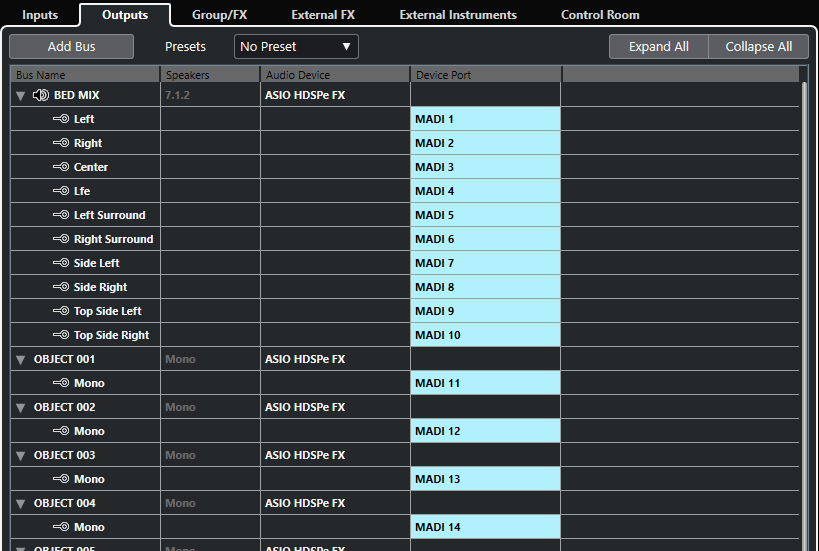Requirements for Beds
Beds for Dolby Atmos projects are in fact channel-based sub-mixes, comparable to stems. When mixing for a Dolby Atmos audio bed using the internal Renderer for Dolby Atmos plug-in, the following applies:
-
We recommend that you use group tracks for beds. You can then route mono, stereo, or surround channels to a bed group.
Note-
If a track is routed to a bed in 3D format, its VST MultiPanner channel panner offers additional settings and parameters for 3D mixing.
-
If you route a 7.1.2 channel to a bus or a group channel in 7.1.2 or another 3D channel configuration, MixConvert V6 is used for panning.
-
-
The following bed channel configurations are supported by the internal Renderer for Dolby Atmos plug-in and the external Dolby Atmos Renderer: 2.0, 3.0, 5.0, 5.1, 7.0, 7.1, 7.0.2, and 7.1.2.
-
Plug-ins that are used in a 3D bus or a group channel must support a corresponding number of channels.
If you use an external renderer, consider the following:
-
You must route the source channel of the bed to a group channel or an output bus with a channel width that is supported by the used renderer.
-
When manually setting up the routing of your Dolby Atmos project, we recommend that you route the first 10 device ports of your audio interface to the bed bus, to ensure the correct routing for the Dolby Atmos mix. You can select the device ports in the Audio Connections window.
ImportantIn Nuendo, the order of surround channels and side channels differs from the Dolby specification for side surround channels (Lss, Rss) and surround rear channels (Lsr, Rsr). To comply with the specification for the external Dolby Atmos Renderer, swap the device ports for the surround channels and the side channels.
